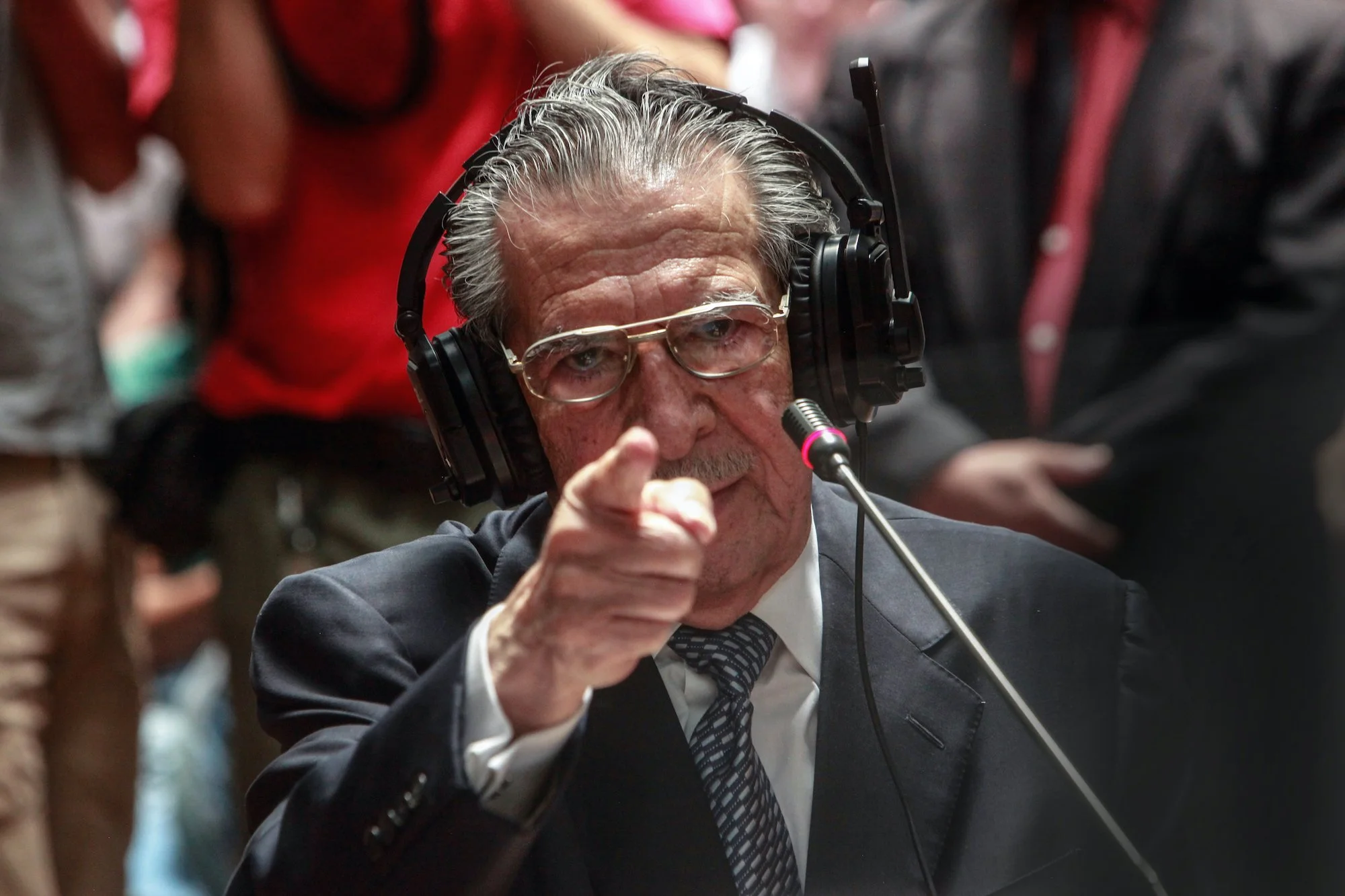Who is Ríos Montt?
If you follow international news, you may have heard that a man by the name of Efraín Ríos Montt is set to appear in court in Guatemala this week. It’s important to understand why.
Montt is a former army general and televangelist who gained control of Guatemala in the early 1980s through a coup d’état. He has long been tied to charges of genocide that took place during his short-lived rule as military dictator in 1982-3. During that time he had the full support of Washington, and in the midst of Cold War fears, Ronald Reagan famously asserted that Montt was “totally dedicated to democracy.”
As a sitting member of Congress until last week, Montt has enjoyed immunity from prosecution — until now. Importantly, while military leaders in Guatemala have tended to deny that genocide occurred (a claim that former general and newly inaugurated president Otto Pérez Molina continues to hold), Montt’s strategy has simply been to deny that he had anything to do with it — not to deny that the 626 massacres and 200,000 deaths over the course of 36 years actually happened. Military documents, for their part, seem to show a fairly direct chain of command from top to bottom during that time, so we’ll see how that argument holds up.
It’s impossible to understand Guatemala today without understanding its past, and Montt was at the center of some of its darkest hours. Here’s how I summarized the country’s recent history in a magazine piece I did on what’s currently happening in the town where I grew up:
Dietrich Bonhoeffer described history as the story of what people do with power. History has not been kind to Guatemala’s indigenous people. The country’s Mayan descendants, though comprising well over half the population, have time and again been dealt a losing hand by those in power.
After Columbus “discovered” the New World, Europeans began settling in the region, usually exercising force as a means of gaining control in matters of politics, economics, and even religion. This wealthy and powerful Old World elite established large-scale coffee and banana plantations, or fincas, on Guatemala’s fertile lowlands. Many of the indigenous people, meanwhile, were pushed to resettle on small tracts of land in the more topographically challenging, and often less fertile, highlands, while some were forcibly conscripted into harvesting the fincas. The Guatemalan Catholic Church, which had by this time become a well-established social and political force, gave its silent assent to the new arrangement.
In the 20th century, with colonialism-as-usual waning, US interests at times assumed a less overt, but no less insidious, role in Guatemala. When, after years of dictatorial tyranny, a delicate democratic process resulted in the election in 1951 of a president committed to land reform, a major US fruit company with much to lose persuaded the Eisenhower administration that recent developments in Guatemala represented a turn towards communism. According to the domino logic of the Cold War, this was seen as an intolerable threat, and the CIA swiftly engineered a coup to overthrow Jacobo Arbenz, Guatemala’s head of state.
Within several years Guatemala had spiraled into a civil war over the struggle for land that would last 36 years, waged between left-wing guerrillas and the military forces representing right-wing dictators. Wanting nothing more than peace, the majority of Guatemalans — and especially the rural-dwelling indigenous poor — were caught in the middle.
After the signing of peace accords brought fighting to an end in 1996, reports by the United Nations and the Guatemalan Catholic Church (which had since “converted” to the side of the poor) revealed that the vast majority of “disappearances,” deaths, and human rights abuses during the war occurred at the hands of the federal government and military forces. Among the most notorious offenders of human rights during the civil war was Efraín Ríos Montt, an army general and evangelical televangelist with strong US support, during whose short-lived presidency in 1982-83 the country saw an alarming escalation of rape, torture, and gruesome massacres of indigenous people. The United Nations accused him of genocide.
This was the world into which I was born at a small hospital in Guatemala City in 1982.
When I heard the news this week that Montt would finally be heading to court, I picked up a book by Victor Montejo, who as a school teacher witnessed one of the massacres that took place in rural Guatemala in 1982, and though he was tortured, he managed to escape with his life. The book is called Testimony: Death of a Guatemalan Village, and while it is terrible to read, it testifies to the reality of what life was like for so many indigenous Guatemalans at that time. I hesitate to recommend it because it is vulgar and graphic, but it’s part of the legacy of the war, and one way or another, part of the legacy of Ríos Montt.
For those concerned with justice and peace, I’d encourage you to follow what happens with Montt and others connected to genocide and human rights abuses in Guatemala. God forbid that we’d ignore it, or that we’d lose this chance to learn from the tragedies of the recent past. And please, pray for the perpetrators, pray for the families of victims, and pray that some semblance of peace and justice would prevail in Guatemala at last.
